Accepted Scientific Name: Eriosyce esmeraldana (F.Ritter) Katt.
Eriosyce (Cactac.) gen. revis. & ampl. (Succ. Pl. Res., 1) 119 (1994)

Chileorebutia esmeraldana (Eriosyce esmeraldana) Photo by: Valentino Vallicelli
If you like deep purple-bodied plants, you simply must get it (if you haven't already).
Origin and Habitat: Chile, Along the cost from Pan de Azúcar Natinal Park South to Esmeralda
Habitat: They strive in granitic hills, few km. from the sea. Some plants grow (and sunk) in flat lands or on soft slopes, only in sand (eventually with little rocks and quartz) while others lives in rocky slopes, between cracks. They grows along with Copiapoa longistamineaSN|1389]]SN|1389]].
Synonyms:
Common Names include:
JAPANESE (日本語): エリオシケ・エスメラルダナ[黒羅漢]
SPANISH (Español): Esmeraldano
Description: Eriosyce esmeraldanaSN|2647]]SN|2647]] is a tiny geophytic , spineless (or spiny) plant usually solitary or sometime branching.
Stems: Flattened, mostly underground, the unusual colouring ranges fromdark green to purplish-brown, 3-4 cm in diameter (but up to 6 cm in cultivation).
Ribs: 13-22, dissolved into more or less rounded tubercles.
Root: Long turbiniform conical taproot.
Spines: Almost spineless or with 5-7 short, thin, needle like spines, 3-5 mm long. The spineless form is more popular with collectors.
Flowers: Apical, yellow (greenish) or reddish, 2-3 cm long and wide. Black bristles and dense wool cover the floral tube and pericarpel.
Fruit: Ovoidal, dry with a thin wall and dehiscing by a basal pore.
Remarks: Individual plants of this species shows a certain degree of variability depending on origin, The plant found from north of Pan de Azucar, arriving to Esmeralda, are mostly with white spines. The plants at north of Esmeralda have usually black spines. While in Esmeralda most of the plants are spineless.
Bibliography: Major references and further lectures
1) Edward Anderson “The Cactus family” Timber Press, Incorporated, 2001
3) James Cullen, Sabina G. Knees, H. Suzanne Cubey "The European Garden Flora Flowering Plants: A Manual for the Identification of Plants Cultivated in Europe, Both Out-of-Doors and Under Glass" Cambridge University Press, 11/Aug/2011
4) David R Hunt; Nigel P Taylor; Graham Charles; International Cactaceae Systematics Group. "The New Cactus Lexicon" dh books, 2006
5) Fred Kattermann “Eriosyce (Cactaceae): The Genus Revised and Amplified” David Hunt, 1994
6) Hoffmann, A. and Walter, H. 1989. Cactáceas en la flora silvestre de Chile. Fundación Claudio Gay, Santiago.
 Chileorebutia esmeraldana (Eriosyce esmeraldana) Photo by: Alexander Arzberger
Chileorebutia esmeraldana (Eriosyce esmeraldana) Photo by: Alexander Arzberger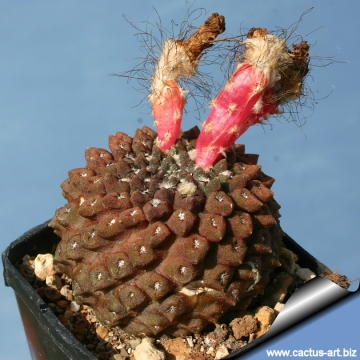 Chileorebutia esmeraldana (Eriosyce esmeraldana) Photo by: Cactus Art
Chileorebutia esmeraldana (Eriosyce esmeraldana) Photo by: Cactus Art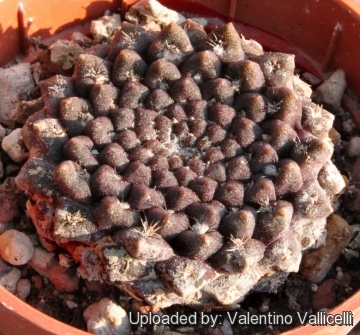 Chileorebutia esmeraldana (Eriosyce esmeraldana) Photo by: Valentino Vallicelli
Chileorebutia esmeraldana (Eriosyce esmeraldana) Photo by: Valentino Vallicelli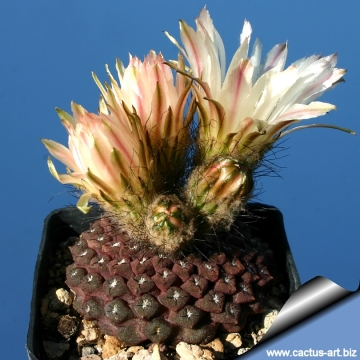 Chileorebutia esmeraldana (Eriosyce esmeraldana) Photo by: Cactus Art
Chileorebutia esmeraldana (Eriosyce esmeraldana) Photo by: Cactus Art Chileorebutia esmeraldana (Eriosyce esmeraldana) Photo by: Cactus Art
Chileorebutia esmeraldana (Eriosyce esmeraldana) Photo by: Cactus Art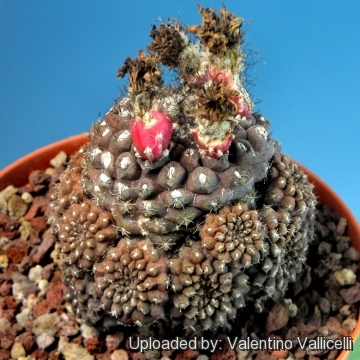 Chileorebutia esmeraldana (Eriosyce esmeraldana) Photo by: Valentino Vallicelli
Chileorebutia esmeraldana (Eriosyce esmeraldana) Photo by: Valentino Vallicelli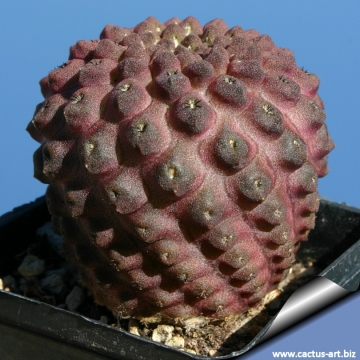 Chileorebutia esmeraldana (Eriosyce esmeraldana) Photo by: Cactus Art
Chileorebutia esmeraldana (Eriosyce esmeraldana) Photo by: Cactus Art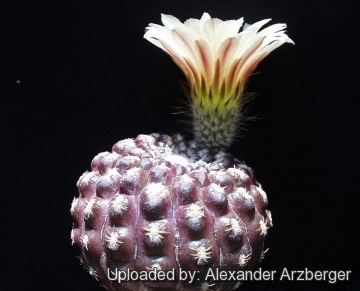 Chileorebutia esmeraldana (Eriosyce esmeraldana) Photo by: Alexander Arzberger
Chileorebutia esmeraldana (Eriosyce esmeraldana) Photo by: Alexander ArzbergerCultivation and Propagation: It is a summer-growing species. Water regularly in summer, but do not over-water (rot prone). It needs good drainage and very a porous potting soil Keep dry in winter. Feed with a high potassium fertilizer in summer. Full sun to light shade
Propagation: Seeds (seldom produces offsets)
Your Photos
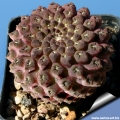
by Cactus Art
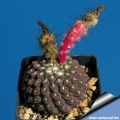
by Cactus Art





















